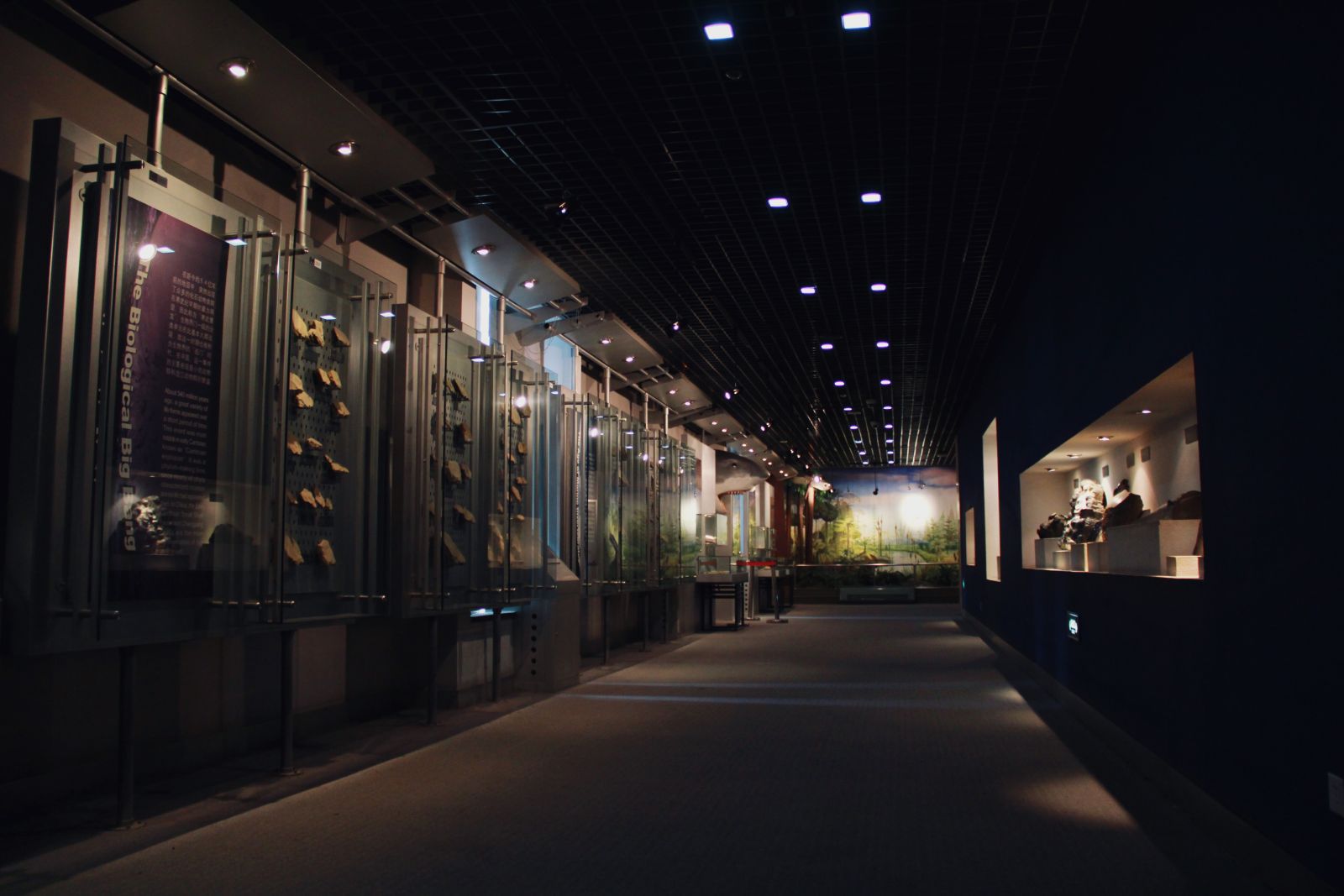Chinese Name: 中国地质博物馆 Pronunciation: Zhōngguó Dìzhì Bówùguǎn
Building Time: 1916
Admission Ticket Fare: 15 yuan
Recommended Time for Visit: 2-3 Hours
Occupied Area: 11,000 square meters
Address: No. 15, Yangrou Hutong, Xicheng District, Beijing, China
Ticket Free of Charge Policy: Seniors over 60 years old are free for the ticket.
| Entrance | Tuesday to Sunday |
| Opening Hours | 9:00-16:30 |
1. Admission to the museum needs an appointment. Visitors are required to make a real-name reservation through the museum’s WeChat official account reservation system in advance. Group reservation, telephone reservation, and on-site reservation are not accepted.
2. The museum is closed on Mondays.
3. Admission is closed at 16:00 from every Tuesday to Sunday.
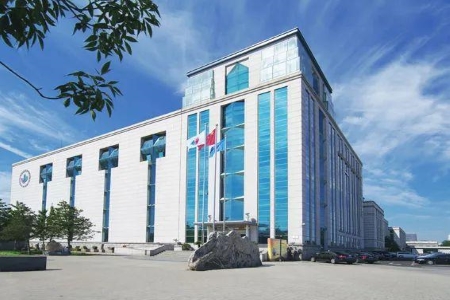
The Geological Museum of China is a national geological museum, which was established in 1916. It ranks first among other museums in Asia because of its collection system, rich achievements, and exquisite displays. Moreover, it enjoys a worldwide reputation.
The Geological Museum of China has a collection of more than 200,000 geological specimens, covering all fields of geoscience. Besides conducting scientific research on collections, the museum has long been engaged in the research of stratigraphic paleontology, mineralogy and petrology, and gemology and museology, and has made fruitful achievements.
The Geological Museum of China is open all year round for exhibitions. Based on the basic earth layer, not only tens of thousands of minerals, rocks, gems, and fossils are exhibited, but the living environment and quality of human beings are highlighted.
In addition, considerable technologies are adopted, consisting of digital, bionic, and virtual reality, to enable the audience to easily enter a wonderful geoscience world on a rich scientific basis by witnessing, operating, and experiencing with their own hands.
The Geological Museum of China has long been carrying out a wide range of social education activities. The annual geoscience summer camp for teenagers in China turns out to be an important and famous part of social education activities.
Moreover, the museum has carried out a series of popular science activities, such as popular science lectures, popular science touring exhibitions, as well as popular science consultation, which has enhanced its social influence.
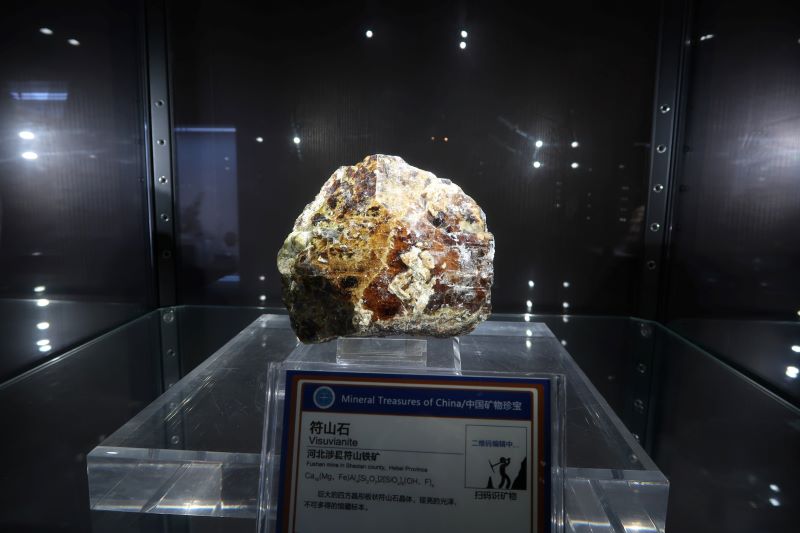
On January 4, 1916, the fifth year of the Republic of China, Yuan Shikai established the Geological Survey.
In 1952, the Ministry of Geology of China was established.
In 1955, the National Geological Exhibition Hall and the Beijing Geological Exhibition Hall were merged into one.
In 1956, the Ministry of Geology decided to build a 10,000 square meter building of the National Geological Exhibition Hall in the west of Beijing.
In September 1958, the new building was completed and renamed “Geological Museum of the Ministry of Geology”.
In October 1959, the exhibition was officially opened to the public.
Since then, the Geological Museum of China has experienced the closure of the museum during the earthquake, and at the same time, constant adjustment and innovation have been made. Until the end of 2000, the renovation project of the museum building was approved. The Geological Museum of China has been developing for 40 years in twists and turns.
In July 2016, Chinese President Xi Jinping sent a letter to congratulate the Geological Museum of China on its 100th anniversary and extended his sincere greetings to geologists across the country.
The museum has permanent exhibitions, special exhibitions, etc.

A permanent exhibition is one that lasts a relatively long time. It is carried out based on a certain theme and through a scientific, rigorous design of contents. These exhibitions are open to the public all year round, with a variety of means and techniques used in conjunction with a wealth of physical exhibits.
Permanent exhibitions usually last for 3-5 years. Each permanent exhibition is an encyclopedia of its subject. At present, the permanent exhibition halls of the museum are Gallery of the Earth, Gallery of Minerals and Rocks, Gallery of Gemstones, and Gallery of Prehistoric Life.
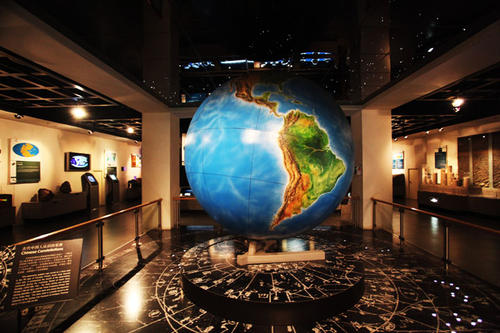
The Gallery of the Earth takes the power as the mainline and introduces the important geological processes occurring on the earth under the action of internal and external forces. The eastern exhibition line introduces internal dynamic geological processes, focusing on plate movement, fold and fault, volcano, earthquake, and other geological processes.
The western exhibition line focuses on the external dynamic geological processes, mainly introducing the geological processes of water and wind. The external dynamic geological process is relatively gentle, like a carving knife that carves out a variety of magnificent mountain landform. In contrast, the internal dynamic processes are more spectacular, they mainly caused the earth’s crust to rise and thicken, forming many huge mountain ranges.

While appreciating the exhibits in the Gallery of Minerals and Rocks, visitors can understand the origin of minerals and rocks in nature, the original production, the classification of various minerals and rocks in nature, the sensory characteristics of representative minerals and rocks, as well as the characteristics available for people to use.
The audience can participate in the exploratory operation of some mineral and rock exhibits and acquire relevant knowledge through the interactive exhibition and the virtual exhibition while appreciating various exquisite and peculiar mineral and rock exhibits.
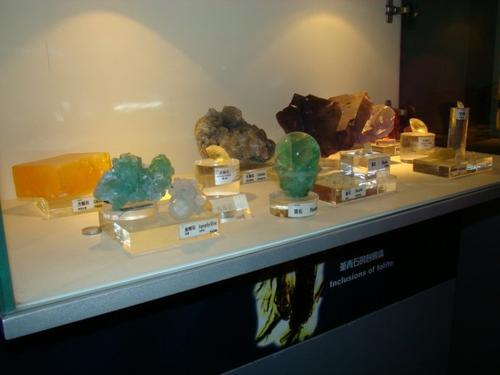
Gallery of Gemstones displays gemstones, jade, organic gemstones, precious metals, and other materials and their finished products. Besides, the gallery integrates knowledge and interest points of gem identification, gem appreciation, gem cutting, gem evaluation, gem genesis, gem microcosm, gem distribution, gem mining, gem processing, jewelry setting, artificially modified gems, artificial gems, and their manufacturing methods, as well as gem culture.
Gallery of Prehistoric Life, with the major events in the process of biological evolution as the clue, introduces the development process of organisms and common fossils in various geological periods to the audience while showing the occurrence, evolution, and extinction process of organisms on the earth.
The period of Special Exhibition is usually from weeks to months. The museum holds 4 to 8 Special Exhibitions on an irregular schedule every year.
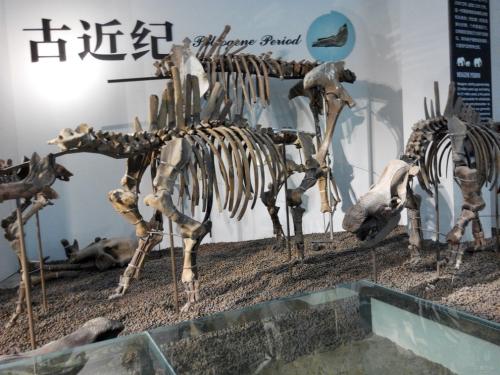
To be specific, there are 13,000 paleontology specimens, 21,000 strata specimens, 10,000 mineral specimens, 6,000 rock specimens, 1,000 gem specimens, 33,000 mineral deposit specimens, 1,000 geological phenomena specimens, as well as a considerable number of geode specimens and other specimens.
In the collection, there are dinosaur series fossils such as Shantungosaurus, Crystals, primitive birds fossils, as well as ancient human fossils such as Homo erectus pekinensis, Homo erectus yuanmouensis, and Upper Cave Man. In addition, there are considerable fish, birds, insects, and other precious prehistoric biological fossils of scientific and ornamental significance.
There are the world’s largest “Crystal King”, drusy specimens of giant fluorite calcite, exquisite azurite, cinnabar, realgar, orpiment, scheelite, stibnite and other mineral specimens that exhibit Chinese characteristics, as well as a wide variety of gems, jade, and several national treasures. Specific collections can be divided into the categories as follows:
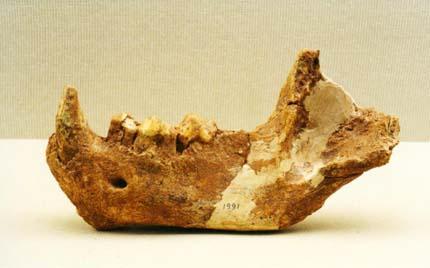
In terms of minerals, there are the fine collections of flower-shaped gypsum, amazon stone, lapis lazuli, and tiger’s eye, etc.
The fossil class consists of notable Confuciusornis sanctus, Chinese hyena, dinosaur egg, Rana basaltica Young, etc.
For jades and gems, there are raw gemstones of diamond, emerald, topaz, spinel, etc.
1. Parking space is easily in short supply. Green travel is recommended.
2. Flammable, explosive and other dangerous materials, and controlled knives are strictly prohibited.
3. It is strictly prohibited to touch or move fire hydrant and security facilities for no reason.
4. No smoking and use of open flame.
5. No pets are allowed in the museum.
6. Children must be accompanied by an adult.
7. Non-interpreters are not allowed to use the teaching equipment in the museum.
Take bus 3, 13, 102, or 42 and get off at Xisi Lukou Xi Station, then you will see the museum.
Take bus 3, 13, 22, 38, 42, 88, 105, 409 or 143 and get off at Xisi Lukou Bei Station. And then walk southward for 130 meters along the Xisibei Dajie, turn right, walk 10 meters, turn left to cross the intersection, and then turn right to go straight for 60 meters, turn right, walk 50 meters to the museum.
Take bus 101, 102, 103, 124, or 612 and get off at Xisi Lukou Dong Station. And then walk westward for 130 meters along the Xisidong Dajie, go straight for 100 meters along the Fuchengmen Dajie, turn left, walk 10 meters, go straight for 20 meters to the destination.
Take bus 102 or 105 and get off at Xisi Lukou Nan Station. Walk northward 200 meters, go across the road junction and turn left into Yangrou Hutong, walk 70 meters, turn right, walk 110 meters turn left, walk 20 meters to the museum.
Take Metro Line 4 and get off at Xisi Station (Exit D), then you will see the museum southwest.
Chinese: 请带我去中国地质博物馆。English: Please take me to the Geological Museum of China.
If you go to the Geological Museum of China from the city center (Grand Hyatt Beijing), it takes about 20 minutes (about 20 yuan).
If you go to the Geological Museum of China from Beijing Capital International Airport, it takes about 40 minutes (about 120 yuan).
If you go to the Geological Museum of China from Beijing Daxing International Airport, it takes about 1 hour (about 180 yuan).
If you go to the Geological Museum of China from Beijing South Railway Station, it takes about 25 minutes (about 30 yuan).
If you go to the Geological Museum of China from Beijing West Railway Station, it takes about 20 minutes (about 25 yuan).
If you go to the Geological Museum of China from Beijing Railway Station, it takes about 30 minutes (about 30 yuan).
